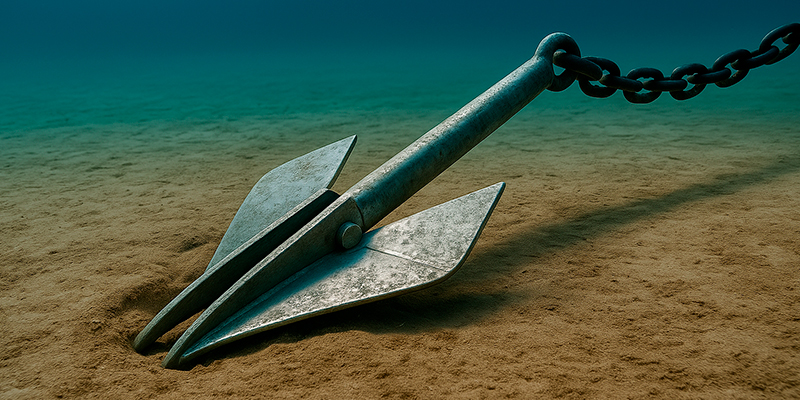The Danforth anchor, also known as a fluke anchor, is a widely used anchoring device renowned for its high holding power relative to its weight. Invented by Richard Danforth in the 1940s for landing crafts, this anchor features a stock at the crown to which two large, flat, triangular flukes are attached. The stock is hinged, allowing the flukes to orient toward the seabed, enabling the anchor to bury itself effectively in suitable bottom conditions.
How It Works
When deployed, the Danforth anchor’s flukes pivot to align with the seabed. As tension is applied to the anchor line, the flukes dig into the bottom, burying themselves and providing substantial holding power. This design is particularly effective in sandy or muddy bottoms, where the flukes can penetrate deeply. The anchor’s lightweight and flat design make it easy to handle and store, especially on smaller vessels.
Advantages
- High Holding Power: The Danforth anchor offers excellent holding strength in appropriate seabed conditions, making it reliable for various boating needs.
- Lightweight and Compact: Its design facilitates easy handling, deployment, and storage, particularly beneficial for small to medium-sized boats.
- Quick Setting: The flukes’ ability to dig in rapidly ensures the anchor sets quickly, providing immediate holding capability.
Limitations
While the Danforth anchor excels in certain conditions, it has limitations. It is less effective in rocky, grassy, or coral bottoms where the flukes cannot penetrate properly. Additionally, in strong currents or if the vessel moves while setting the anchor, the flukes may «kite» or «skate» over the bottom, preventing proper setting.
Conclusion
The Danforth anchor is a reliable and efficient anchoring solution for boats operating in sandy or muddy seabeds. Its design offers high holding power, ease of use, and convenient storage. However, boaters should assess seabed conditions and anchoring requirements to ensure the Danforth anchor is suitable for their specific needs.

